 As early as the 8th century Jews lived in parts of the lands of modern Belarus. Cities which later became the important centers of Jewish life in Belarus were at first mere villages. Hrodna, one of the oldest, was first mentioned in the chronicles of 1128. Navahrudak was founded somewhat later by Yaroslav I the Wise; Kerlov in 1250; Voruta and Twiremet in 1252; Eiragola in 1262; Halshany and Kowno in 1280; Lida, Telšiai, Vilna and Troki in 1320. Jews from Lithuania, first arrived in Belarus in the fourteenth century when the Grand Prince Vytautas of Lithuania granted charters to Jews in Brest (1388) and Grodno (1389). This further expanded with additional settlements in Novogrudok in 1445, in Minsk and Smolensk in 1489, in Pinsk in 1506, and later still in Vitebsk, Mogilev and Orsha.
As early as the 8th century Jews lived in parts of the lands of modern Belarus. Cities which later became the important centers of Jewish life in Belarus were at first mere villages. Hrodna, one of the oldest, was first mentioned in the chronicles of 1128. Navahrudak was founded somewhat later by Yaroslav I the Wise; Kerlov in 1250; Voruta and Twiremet in 1252; Eiragola in 1262; Halshany and Kowno in 1280; Lida, Telšiai, Vilna and Troki in 1320. Jews from Lithuania, first arrived in Belarus in the fourteenth century when the Grand Prince Vytautas of Lithuania granted charters to Jews in Brest (1388) and Grodno (1389). This further expanded with additional settlements in Novogrudok in 1445, in Minsk and Smolensk in 1489, in Pinsk in 1506, and later still in Vitebsk, Mogilev and Orsha.
In the sixteenth century Belarus became part of the Polish-Lithuanian Commonwealth and at this time, there was growing antagonism between the lesser nobility and the Jews. Their relations became strained, and the enmity of the Christians began to disturb the life of the Litvak Jews. The anti-Jewish feeling, due at first to economic causes engendered by competition, was fostered by the clergy, who were then engaged in a crusade against Jews.They prevented Jews from many employment opportunities and prohibited them from building synagogues. As a form of more violent opposition, Russian Christians repeatedly attacked Jewish communities in the region.They coerced Jews into conversion and murdered many of them as well. Most Jews were living in poverty. Even with wide-spread po
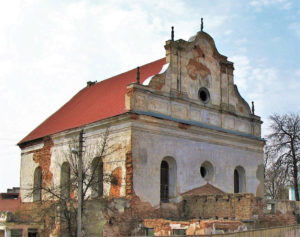 There were only very limited religious persecutions in Belarus until the 19th century and the country was famous for its tolerance. By 1897, there were 725,548 Jews in Belarus. The communities were so large, in fact, that many of Belarus’s larger cities were occupied by a majority of Jews. Cities such as Minsk, Pinsk, Mogilev, Bobruisk, Vitebsk, and Gomel contained more than 50% Jews. In 1804 two provinces were added to those allotted to the Jews— Astrakhan and Caucasia. These provinces collectively were given the name of the Jewish Pale.
There were only very limited religious persecutions in Belarus until the 19th century and the country was famous for its tolerance. By 1897, there were 725,548 Jews in Belarus. The communities were so large, in fact, that many of Belarus’s larger cities were occupied by a majority of Jews. Cities such as Minsk, Pinsk, Mogilev, Bobruisk, Vitebsk, and Gomel contained more than 50% Jews. In 1804 two provinces were added to those allotted to the Jews— Astrakhan and Caucasia. These provinces collectively were given the name of the Jewish Pale.
World War I led to an increased emigration of Jews from Lithuania and Poland. Being on the border between Poland and Russia, the Belarus Jews were accused of spying both for the Russians and the Poles. The Polish army led attacks on the Jewish communities in the area. Likewise, Russian soldiers led massacres in Jewish Belarus towns. Both armies used the war as an excuse to act out their anti-Semitic sentiments. In 1921, the Treaty of Riga divided Belarus between Poland and the Soviet Union. At the beginning of Soviet rule in Belarus, Jews lived in relative harmony within the Russian society. The Belarus republic contained the largest concentration of Jews in the Soviet Union and, by 1926, approximately 407,000 Jews lived in Belarus.
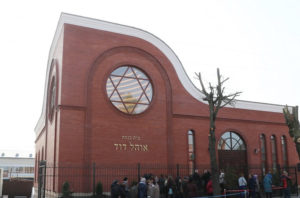 In 1939, Soviet Russia annexed Western Belarus, and the Communist Party immediately shut down religious organizations in the area. Religious schools, originally taught in Hebrew, were transformed into secular Yiddish-speaking schools. The Communist Party attempted to assimilate the Jewish population of Western Belarus. This mass assimilation, however, was halted by the Nazi invasion of 1941. Jewish secularization was unimportant because the Nazis made no exceptions for assimilated Jews. As the Nazi army moved into Soviet Russia, many of the Belarus Jews attempted to flee. Some managed to escape, but most were stopped by approaching troops or Soviet guards who would not permit Jews to cross the border. Belarus Jews were slaughtered en masse by both SS troops who crusaded through the cities, and by local Belarus police. Pogroms became common again, and any Jews who were not killed by bullets, by the Nazis or Nazi-supporters were put into ghettos.
In 1939, Soviet Russia annexed Western Belarus, and the Communist Party immediately shut down religious organizations in the area. Religious schools, originally taught in Hebrew, were transformed into secular Yiddish-speaking schools. The Communist Party attempted to assimilate the Jewish population of Western Belarus. This mass assimilation, however, was halted by the Nazi invasion of 1941. Jewish secularization was unimportant because the Nazis made no exceptions for assimilated Jews. As the Nazi army moved into Soviet Russia, many of the Belarus Jews attempted to flee. Some managed to escape, but most were stopped by approaching troops or Soviet guards who would not permit Jews to cross the border. Belarus Jews were slaughtered en masse by both SS troops who crusaded through the cities, and by local Belarus police. Pogroms became common again, and any Jews who were not killed by bullets, by the Nazis or Nazi-supporters were put into ghettos.
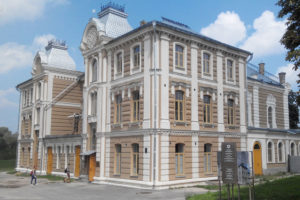 In 1941, when the Nazis invaded 670,000 Jews lived in western Belarus and 405,000 in eastern Belarus. No less than 800,000 died at the hands of the Nazis in occupied Belarus, which was among the highest percentage in Europe. Holocaust by bullets involved Soviet many thousands of Jews in the various ghettos being gunned down en mass, where they lived. There were also reports of putting a large number of Jews into a house and blowing it up or setting fire to it and shooting any survivors.
In 1941, when the Nazis invaded 670,000 Jews lived in western Belarus and 405,000 in eastern Belarus. No less than 800,000 died at the hands of the Nazis in occupied Belarus, which was among the highest percentage in Europe. Holocaust by bullets involved Soviet many thousands of Jews in the various ghettos being gunned down en mass, where they lived. There were also reports of putting a large number of Jews into a house and blowing it up or setting fire to it and shooting any survivors.
Another 48,000 Jews, in the Red Army, died in combat. Ninety percent of the Jews in Belarus were murdered.
Ghetto revolts began in 1942. The Nazis began to destroy the established ghettos, and many underground groups organized the burning of buildings and mass attempts at escaping the Nazis. Some Jews who were able to flee joined the partisans in Russia. The partisans were a non-Jewish organization that vehemently opposed Nazi rule.
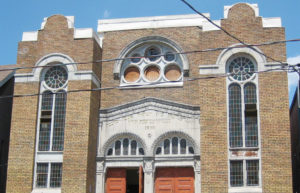 Approximately 10,000-20,000 Jews joined the movement, which offered resistance to the Nazis. In Western Belarus, there were both organized undergrounds and resistance without the help of an organization. Thousands of Jews hid from the Nazis, while at least 25,000 escaped to the forests. In Eastern Belarus, Jews resisted in their ghettos; in Minsk, an organized underground functioned until the ghetto was liquidated. About 10,000 Jews from Minsk fled to the forests. Many joined partisan units, and two Jewish battalions operated there: that of the Bielski brothers and that of Shalom Zorin.
Approximately 10,000-20,000 Jews joined the movement, which offered resistance to the Nazis. In Western Belarus, there were both organized undergrounds and resistance without the help of an organization. Thousands of Jews hid from the Nazis, while at least 25,000 escaped to the forests. In Eastern Belarus, Jews resisted in their ghettos; in Minsk, an organized underground functioned until the ghetto was liquidated. About 10,000 Jews from Minsk fled to the forests. Many joined partisan units, and two Jewish battalions operated there: that of the Bielski brothers and that of Shalom Zorin.
When, in June 1941, his hometown was overrun by Nazi German forces, 4,000 local Jews were immediately exterminated, including Bielsky’s parents, two of his brothers and his newly-born daughter. Tuvya and 17 of his relatives escaped to the woods and created a Jewish partisan unit.
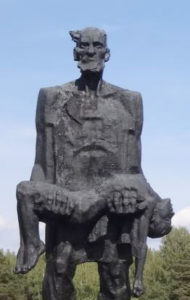 By August 1942, the unit consisted of 250 fighters and by the spring of 1943, it had 750 members. At that point, the unit bore the name of “Ordzhenikidze” (after Soviet dignitary Grigory Ordzhenikidze) and joined the Soviet-led partisan brigade named after Kirov. The unit rescued 1,230 Jews, derailed 6 enemy trains, blew up 20 bridges, destroyed 16 vehicles, and killed more than 250 Wehrmacht soldiers and officers. Tuvya’s brother Zus personally killed 47 Germans and their collaborators. Soon after the war, Tuvya and Zus escaped through a still porous border to Poland and from there traveled to Palestine.
By August 1942, the unit consisted of 250 fighters and by the spring of 1943, it had 750 members. At that point, the unit bore the name of “Ordzhenikidze” (after Soviet dignitary Grigory Ordzhenikidze) and joined the Soviet-led partisan brigade named after Kirov. The unit rescued 1,230 Jews, derailed 6 enemy trains, blew up 20 bridges, destroyed 16 vehicles, and killed more than 250 Wehrmacht soldiers and officers. Tuvya’s brother Zus personally killed 47 Germans and their collaborators. Soon after the war, Tuvya and Zus escaped through a still porous border to Poland and from there traveled to Palestine.
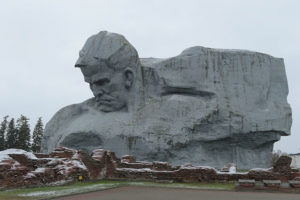 The end of World War II led to a gradual emigration of Jews from Belarus. By 1979, 135,400 Jews lived in the region but, a decade later, only 112,000 Jews remained. Belorussian Jews immigrated to both Israel and the United States. During this period, Belorussia remained under Communist rule. Anti-Semitism and religious persecution were widespread in the region, and Jews were again prevented from traditional practice.
The end of World War II led to a gradual emigration of Jews from Belarus. By 1979, 135,400 Jews lived in the region but, a decade later, only 112,000 Jews remained. Belorussian Jews immigrated to both Israel and the United States. During this period, Belorussia remained under Communist rule. Anti-Semitism and religious persecution were widespread in the region, and Jews were again prevented from traditional practice.
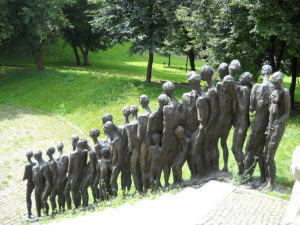 Synagogues and Jewish cemeteries have been returned to Jewish communities, as well as yeshivot and other buildings confiscated by the Communist Party. In 2002, the Museum of History and Culture of Belarus Jews opened and has since served as an educational centre, teaching and researching the Holocaust as well as the history and culture of the Jewish people. On July 26, 2009, a plaque was placed on a bridge abutment by a river where 3,400 Jews from the Baranovichy Ghetto were pulled off the cattle cars, shot, and dropped in the river in the Zeliony Most region. Another memorial has been placed in a rolling field near the Bagerovo village where approximately 4,670 Jews were forced to strip to their underwear, lined up, shot and buried in an anti-tank trench. The Jewish cemetery in Grozov was restored and described in July 2009; the cemeteries of Volozhin and Mir – in July and August 2010. In 2011 museum “Jews of Brest” was opened and a memorial of Brest ghetto.
Synagogues and Jewish cemeteries have been returned to Jewish communities, as well as yeshivot and other buildings confiscated by the Communist Party. In 2002, the Museum of History and Culture of Belarus Jews opened and has since served as an educational centre, teaching and researching the Holocaust as well as the history and culture of the Jewish people. On July 26, 2009, a plaque was placed on a bridge abutment by a river where 3,400 Jews from the Baranovichy Ghetto were pulled off the cattle cars, shot, and dropped in the river in the Zeliony Most region. Another memorial has been placed in a rolling field near the Bagerovo village where approximately 4,670 Jews were forced to strip to their underwear, lined up, shot and buried in an anti-tank trench. The Jewish cemetery in Grozov was restored and described in July 2009; the cemeteries of Volozhin and Mir – in July and August 2010. In 2011 museum “Jews of Brest” was opened and a memorial of Brest ghetto.
In 2010, memorials have been placed in Bystritsa village (Hrodna oblast), Vysokoye (Brest oblast), Nesvizh, and Kopyl (Minsk oblast); a memorial was built to the Austrian Jews who perished in the Minsk ghetto and Maly Trostenets concentration camp; a memorial was put up in Mazyr (unfortunately, the authorities insisted that the word “Jews” be replaced on the memorial by the old expression “civilians”); a memorial complex was built in Vitebsk.
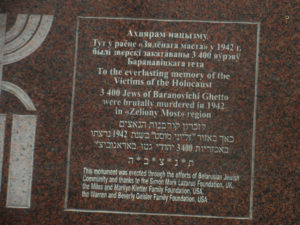 In May 2019, more than 1,000 victims of the Holocaust were buried in a cemetery outside the city of Brest where the Nazis had established a ghetto. Their bones were found by construction workers as they began a project to build luxury apartments. The remains were placed in 120 coffins decorated with the Star of David. Several memorials to Holocaust victims were funded fully or in part by local authorities.
In May 2019, more than 1,000 victims of the Holocaust were buried in a cemetery outside the city of Brest where the Nazis had established a ghetto. Their bones were found by construction workers as they began a project to build luxury apartments. The remains were placed in 120 coffins decorated with the Star of David. Several memorials to Holocaust victims were funded fully or in part by local authorities.
Since 1989, 68,000 Jews have emigrated to Israel from Belarus. In 2018 there were about 9,500 Jews. About half of the Jews live in Minsk, the nation’s capital. Other Jewish communities are in: Brest, Vitebsk, Gomel, Mogilev, Hrodna, Babruysk, Polotsk, Mazyr, Baranovichi, and Pinsk.